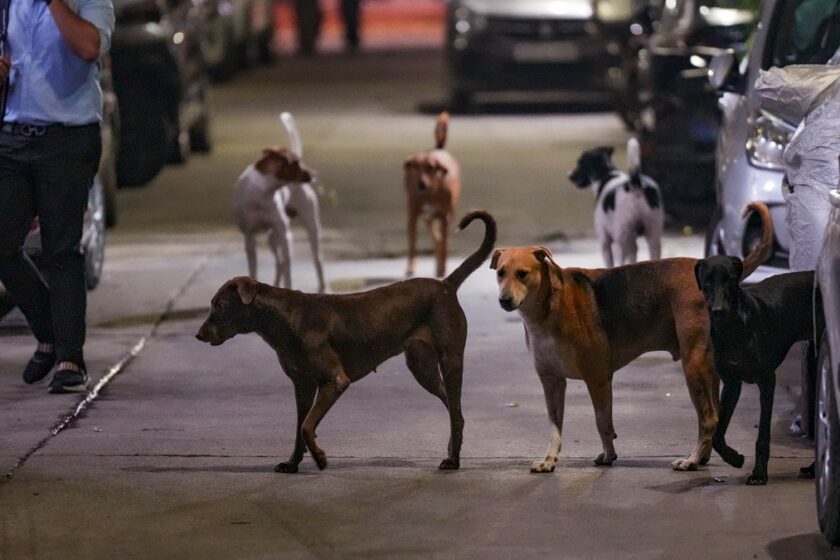The Supreme Court of India has recently issued an order to remove all stray dogs from public spaces, sparking a widespread debate across the country. The ruling has drawn mixed reactions from citizens, animal rights activists, civic authorities, and legal experts. While some view it as a step toward public safety, others see it as a threat to animal welfare and ethical responsibility.
The Supreme Court’s Directive
The order instructs municipal bodies and state governments to take immediate action to identify and remove stray dogs from streets, residential areas, and marketplaces. The primary reasoning behind this move is to address growing concerns over stray dog attacks, which have been reported in several states over the past year.
The Court emphasized that public safety must be a priority and that no citizen should live in fear of being attacked by stray animals. Authorities have been given strict timelines to implement the order, and progress reports are expected to be submitted periodically.
Public Safety Concerns
Over the past few years, incidents of dog bites have made headlines across India. In many cases, children and the elderly have been the victims, raising concerns about the need for effective measures.
According to civic data from multiple cities, thousands of dog bite cases are reported annually, with several resulting in severe injuries and, in rare cases, fatalities due to rabies. Public safety advocates argue that the removal of strays from streets is a practical and necessary solution.
Animal Rights Activists’ Response
Animal welfare organizations, however, have expressed strong opposition to the ruling. Groups argue that removing stray dogs entirely could lead to inhumane treatment, displacement, or even mass culling, which would violate the Prevention of Cruelty to Animals Act.
Activists also point out that street dogs often act as informal “guards” in neighborhoods, deterring theft and other crimes. Instead of removal, they advocate for mass sterilization, vaccination drives, and community dog feeding programs as sustainable and ethical solutions.
Legal and Ethical Dilemma
The order raises a complex legal question: How to balance the rights of humans with those of animals? The Supreme Court’s judgment has reignited a broader conversation about the Animal Birth Control (ABC) Rules, 2023, which focus on sterilization and vaccination rather than removal.
Legal experts highlight that implementing the removal order without violating animal protection laws will require careful planning and oversight.
Civic Authorities’ Challenges
Municipal corporations across the country now face the daunting task of identifying, capturing, and relocating stray dogs. This process is logistically challenging due to:
-
The high stray dog population in urban and rural areas
-
Limited infrastructure such as animal shelters
-
Shortage of trained animal handlers
-
Public resistance in some communities
Officials also face budgetary constraints, as mass removal operations require significant funding for transport, shelter maintenance, and medical care for the animals.
Impact on Communities
The removal of stray dogs could have mixed consequences for local communities:
-
Positive: Reduced dog bite incidents, safer public spaces, fewer rabies cases
-
Negative: Loss of neighborhood “community dogs,” disruption of urban ecosystems, and potential increase in rodent populations due to fewer natural predators
Social Media Reactions
The ruling has ignited a firestorm on social media platforms.
-
Supporters hail it as a bold step for public safety, sharing personal stories of attacks and demanding strict enforcement.
-
Critics accuse the order of being cruel and short-sighted, calling for humane alternatives and long-term solutions like TNR (Trap, Neuter, Release) programs.
The hashtag #SaveStrayDogs is trending alongside #PublicSafetyFirst, reflecting the deep division in public opinion.
Possible Alternatives to Complete Removal
Experts suggest that rather than full-scale removal, a balanced approach could work better:
-
Mass Sterilization Programs – Controlling stray dog populations humanely over time
-
Vaccination Drives – Preventing rabies and other communicable diseases
-
Public Education – Encouraging responsible pet ownership and avoiding pet abandonment
-
Stray Adoption Drives – Finding homes for friendly, non-aggressive street dogs
-
Designated Dog Zones – Safe areas for stray dogs away from busy human settlements
The Road Ahead
While the Supreme Court’s order is legally binding, its implementation strategy will be closely watched in the coming months. Both supporters and opponents agree that public safety and animal welfare must go hand-in-hand.
The decision also underscores the urgent need for national-level animal management policies that consider population control, vaccination, and ethical treatment. Without a clear, humane plan, this order could lead to legal challenges and heightened social tensions.
Conclusion
The Supreme Court’s directive to remove stray dogs from public spaces marks a turning point in India’s animal management debate. While aimed at ensuring public safety, it has sparked passionate discussions about animal rights, ethical treatment, and sustainable solutions.
The challenge now lies in finding a middle ground that protects both human lives and the welfare of animals — a balance that could define the future of urban living in India.

